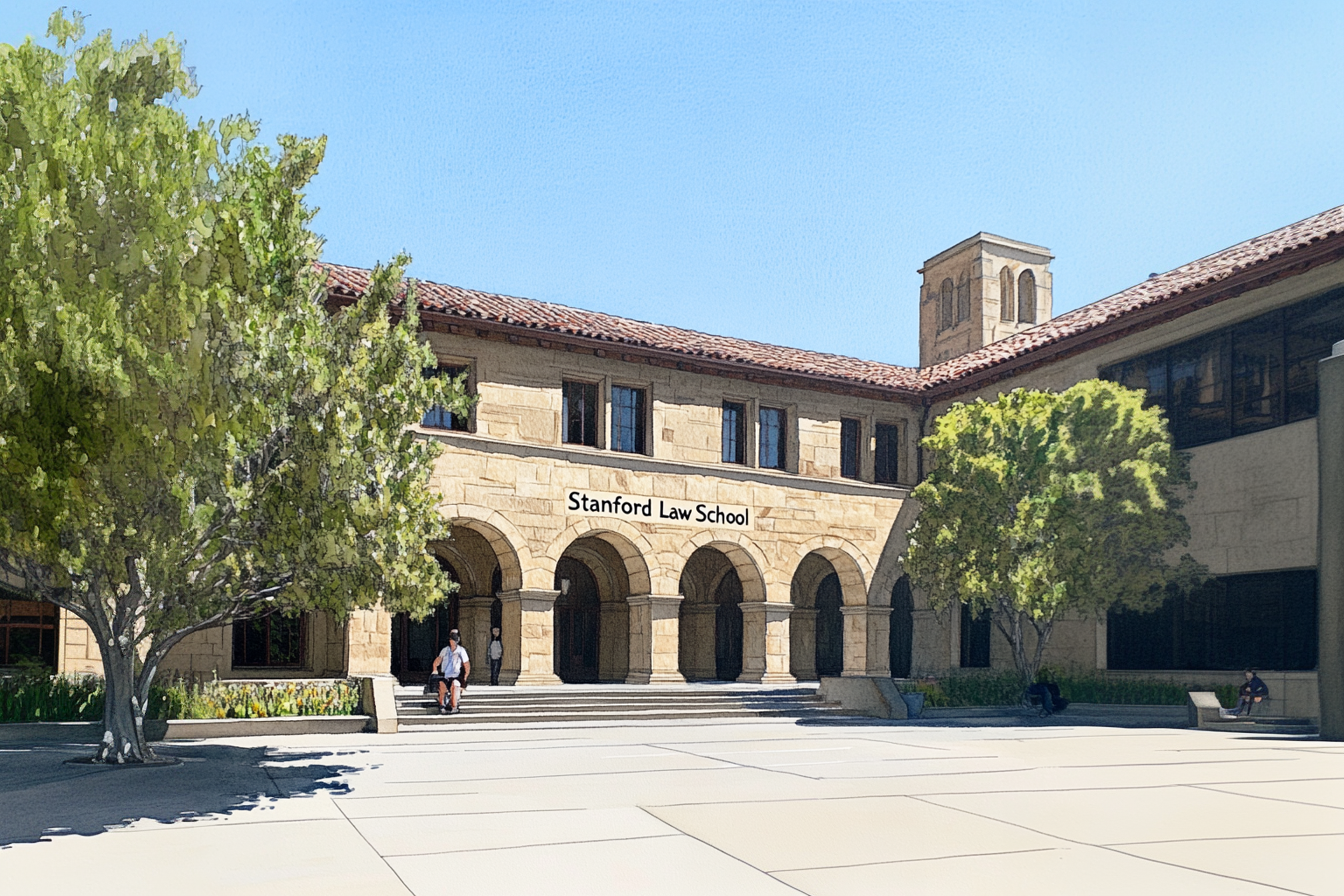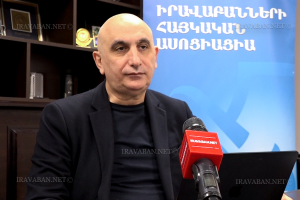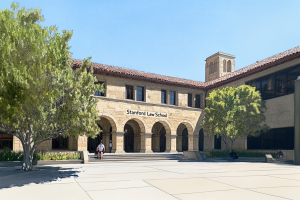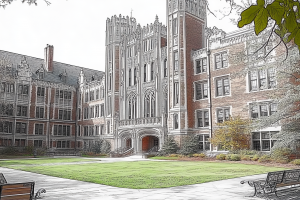The Armenian Lawyers’ Association and Iravaban.net continue their special project “Law Schools Abroad”. This time we will present Stanford Law School, one of the leading legal education institutions in the U.S. and the world.
This initiative aims to introduce Armenian readers to the world’s leading law schools, showcasing their unique features, curricula, and opportunities for international students. Karen Zadoyan, President of the Armenian Lawyers’ Association, is the visionary behind this special project.
This special project will help those interested in law, Armenian law students, and lawyers gain a better understanding of international legal education. It will also promote the professional development of Armenian lawyers in a global context.
Iravaban.net’s journalists and experts will present detailed and engaging stories about each law school. This special project will be innovative, utilizing the latest technological tools. We will ensure the information is up-to-date and visually compelling.
To enrich our stories, we will use AI-generated images. These images are artistic interpretations inspired by descriptions of the law schools and their programs. They are designed to provide visual accompaniment to our articles, stimulate imagination, and increase engagement. However, it’s important to note that these AI-generated images may not accurately represent the actual appearance of the schools or their facilities. They are creative visualizations intended to complement our written content and should be viewed as illustrative rather than documentary material.
Our goal is to provide a rich, multimedia experience that brings these prestigious law schools to life for our readers, combining factual reporting with innovative visual elements. We believe this approach will make the complex world of international legal education more accessible and engaging for our audience.
- Introduction
Stanford Law School is known as a leader in innovation in legal education. Stanford Law School was founded in 1893 as the law department of Leland Stanford Junior University. The school’s first dean was Benjamin Harrison, the 23rd President of the United States. In 1908, it was officially renamed Stanford Law School.
The school is located on the Stanford University campus in Stanford, California. It is located in the heart of Silicon Valley and has a favorable geographic location. This location allows Stanford Law School to closely collaborate with leading technology companies in Silicon Valley and offer its students unique opportunities at the intersection of law and technology.
- Rankings and Reputation
According to the 2024 U.S. News & World Report rankings, U.S. News & World Report is tied for 1st place with Yale Law School among 196 law schools in the U.S. The school received a perfect 100 points in the overall score.
Key indicators include:
- Peer and professional assessment:
- Peer assessment: 4.6 out of 5
- Lawyers/judges assessment: 4.7 out of 5
- Selectivity in admissions:
- GPA range (25th-75th percentile): 3.83-3.99
- Median undergraduate GPA: 3.95
- LSAT score range (25th-75th percentile): 171-175
- Median LSAT score: 173
- Acceptance rate: 7.3%
- Student-faculty ratio: 4.4:1, indicating a very favorable ratio for personalized attention.
- Post-graduation outcomes:
- Graduates employed in full-time jobs 10 months after graduation: 95.2%
- First-time bar passage rate: 94.4%
- Ultimate bar passage rate (2020 graduating class): 99.4%
- Library resources: 35.9 students per library staff member
These statistics highlight Stanford Law School’s extremely competitive admissions process, the high quality of students, strong faculty resources, and excellent post-graduation outcomes, especially in terms of bar passage rates.
Stanford Law School also holds leading positions in specialized areas:
- Business/Corporate Law,
- Criminal Law (tie),
- Intellectual Property Law,
- Constitutional Law (tie),
- Contracts/Commercial Law.
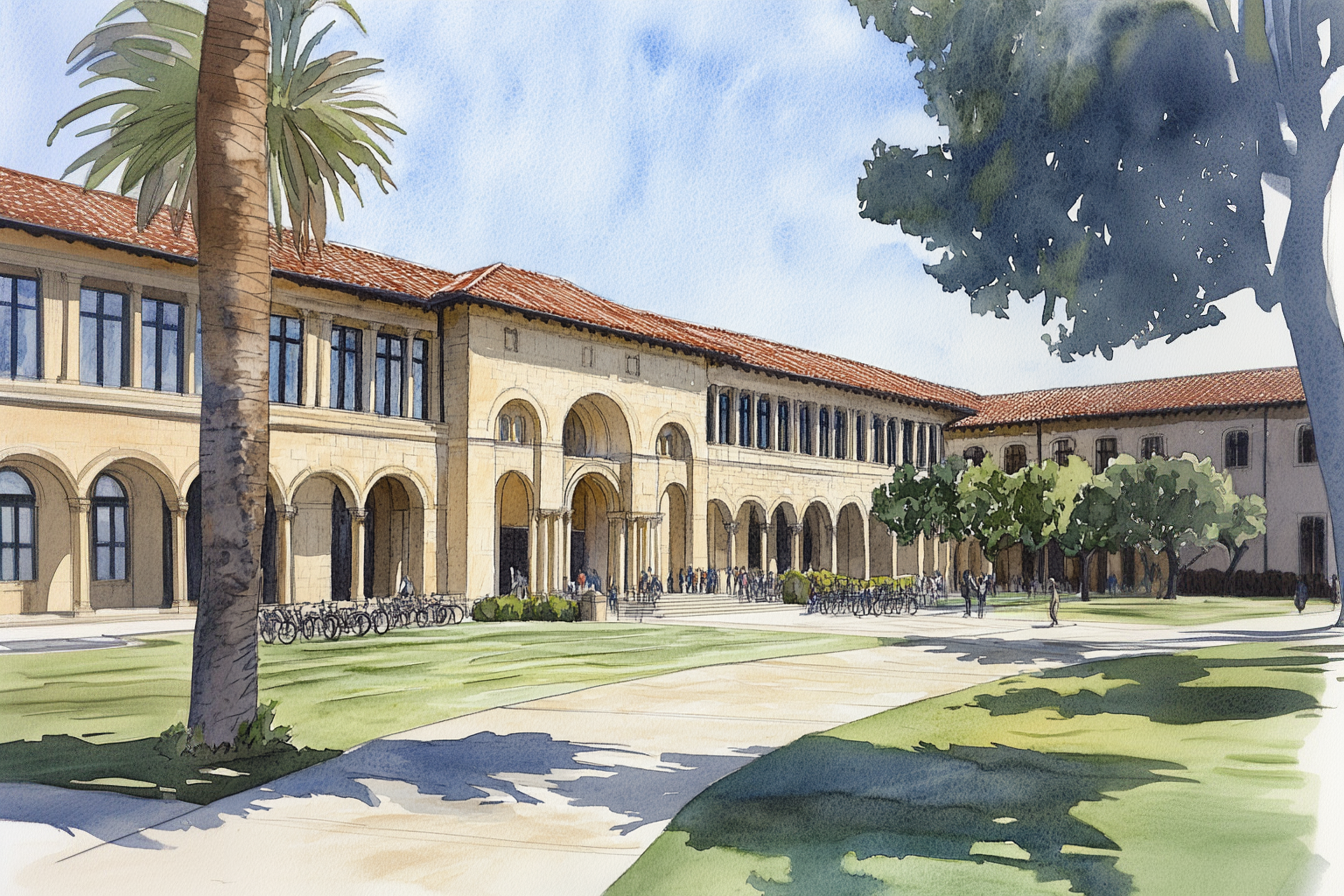
The image symbolizes the Stanford Law School campus.
- Programs Offered
Stanford Law School offers several legal education programs:
-
- JD (Juris Doctor): The Juris Doctor (JD) program is Stanford Law School’s primary professional degree, preparing students for careers as lawyers. This program typically takes three years and provides a comprehensive legal education. Stanford’s approach to the JD program encompasses not only teaching legal doctrine but also developing interdisciplinary and practical skills.
- JSM (Master of the Science of Law): The Master of the Science of Law (JSM) degree is awarded to individuals who hold a JD (or equivalent) degree and participate in Stanford’s Program in International Legal Studies (SPILS program).
- JSD (Doctor of the Science of Law): The Doctor of the Science of Law (JSD) is Stanford Law School’s most advanced law degree, designed to prepare scholars and teachers in law. The program is open only to a small number of outstanding candidates who hold a JD or LL.B. from abroad. Students develop their expertise in various areas of law and have the opportunity to study related disciplines. The program culminates in a dissertation defense. Admission is highly competitive, and some financial support is provided to admitted students.
Stanford Law School’s JSD program has two main admission paths. The first is for graduates of the Stanford Program in International Legal Studies (SPILS), from which at least two students are admitted each year. The second path is open to graduates of LLM programs from Stanford and other U.S. law schools. In this case, applicants must submit a substantial, independent research paper they have authored to demonstrate their scholarly potential. In both cases, admission is highly competitive and implies high standards.
- LLM (Master of Laws): The Master of Laws (LLM) program offers a course-based curriculum of advanced study with specialization in the following areas:
The Master of Laws (LLM) program admits approximately 15-20 students each year for each specialization. The LLM program is intended only for students who received their first law degree outside the United States.
- SPILS (Stanford Program in International Legal Studies): The Stanford Program in International Legal Studies (SPILS) offers a Master of the Science of Law (JSM) degree with an emphasis on interdisciplinary research. It is designed for international candidates with legal education from outside the U.S. who aspire to careers in academia, research, judiciary, or public policy. The program admits about 12 fellows each year and encourages students interested in Corporate Governance & Practice or Law, Science & Technology to apply. SPILS and the LLM program have separate admission processes, so students can apply to both for more opportunities.
- MLS (Master of Legal Studies): The Master of Legal Studies (MLS) degree is a non-professional degree designed for advanced graduate students from the United States or abroad who do not have a first degree in law and whose interdisciplinary research requires a foundation in the legal system. Only a few such students are admitted each year, if at all.
The school is known for its flexible curriculum, which allows students to tailor their studies to their own interests and career goals.
- Innovative Programs
Stanford Law School is known for its innovative approaches. Here are a few examples:
- Law, Science and Technology: This program focuses on the intersections of technology and law, including cybersecurity, artificial intelligence, and data privacy.
The program combines the resources of Stanford Law School, including renowned expert faculty, alumni working in leading areas of technology law, technologically savvy and enthusiastic students, and its location in the heart of Silicon Valley to address the many issues arising from the increasingly prominent role of science and technology in national and global arenas. The program operates to help students, legal professionals, business leaders, government officials, and the general public explore these issues and find innovative answers to them.
-
- The program aims to:
- Give every Stanford Law School student the opportunity to address these issues through innovative courses, preparing them to operate at the highest level at the intersections of law with science and technology.
- Raise professional awareness and public consciousness about technical and ethical challenges.
- Promote informed public policies on science and technology in national and global arenas.
- Contribute to the international exchange of ideas in the field of “Law, Science and Technology”.
- Law and Society: This program examines the relationships between law and society using interdisciplinary approaches.
The program is a student-run program that aims to promote and develop socio-legal interdisciplinary scholarship. This program advances “Law and Society” research and raises awareness of the field as a serious discipline in the analysis of law in a broad social context. It regularly presents speakers and conferences, workshops and fellowships, and provides mentoring to young scholars in SLS’s “Law and Society” oriented academic programs such as JD/PhD in Sociology, SPILS and JSD.
- Environmental and Natural Resources Law and Policy: This program focuses on environmental law and policy, including climate change and sustainable development issues.
The program likely includes the following key topics:
- Environmental protection legislation
- Legal foundations of natural resource management
- Legal and policy aspects of climate change
- Energy law and policy
- International environmental law
Students learn to analyze complex environmental problems, develop legal solutions, and understand the impact of policies on the environment and natural resources. The program aims to prepare specialists who can work in government agencies, public organizations and the private sector, contributing to sustainable development and environmental protection.
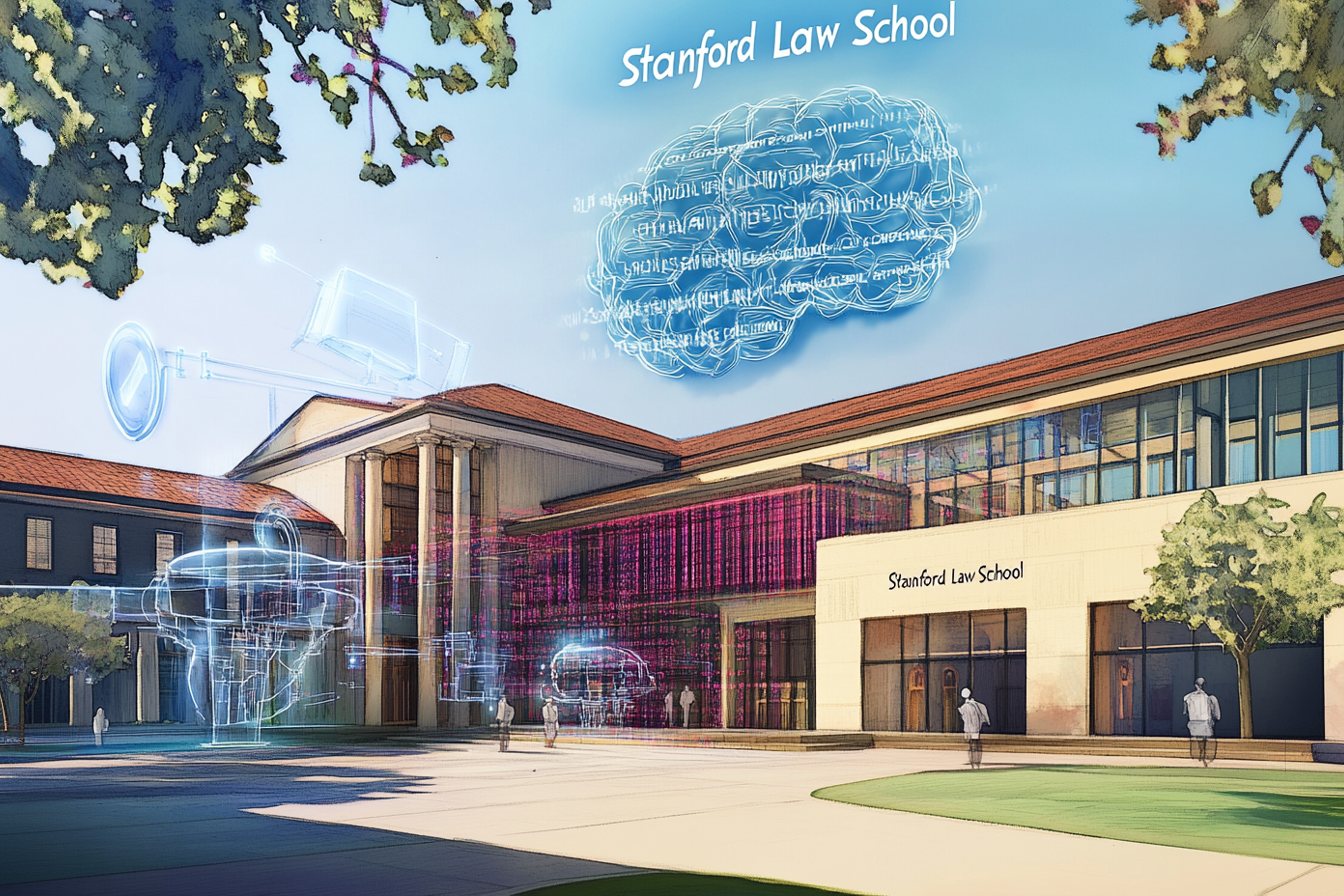
The image symbolizes Stanford Law School being at the forefront of innovation.
- Clinical Programs
Stanford Law School is known for its extensive clinical programs. The school offers more than 20 clinics covering various areas of law. Some notable clinics include:
- Juelsgaard Intellectual Property and Innovation Clinic: In the clinic, students engage in practical representation of clients on innovative issues of intellectual property (copyright and DMCA, patent and trademark) protection and other laws and technology policies that affect innovation, including AI regulation and accountability, online speech and content moderation, technologies and racial justice, antitrust and competition issues, pharmaceutical regulation, privacy, cybersecurity, net neutrality, and more.
- Environmental Law Clinic: The clinic gives students the opportunity each quarter to represent national, regional and local non-profit organizations on various environmental issues. The main goal of the clinic is to help students develop essential lawyer skills through practical experience in real cases.
Under the guidance of clinic supervisors, clinic students work on litigation and policy issues at the intersection of law, science and policy. As part of their cases in the clinic, students help explore new issues and potential clients, develop strategies, research and develop factual and legal issues, and conduct administrative and judicial proceedings.
- Immigrants’ Rights Clinic: Clinic students take full responsibility for defending clients against deportation in San Francisco Immigration Court, the Board of Immigration Appeals, and federal appellate courts. As part of this work, students write complex legal memos, handle cases, conduct fact investigations, interview witnesses and clients, and represent clients in mini-trials. Students also engage in innovative litigation and advocacy, collaborating with local and national immigrant rights organizations.
- Organizations and Transactions Clinic: The clinic was Stanford’s first corporate experiential course that involved representing real clients. It continues to be a corporate experiential course, shifting the focus to representing the rights of low-income entrepreneurs. Students represent multiple clients, including low-income entrepreneurs, social enterprises (i.e., businesses that aim to solve social or environmental challenges) and non-profit organizations. The clinic organizes educational legal seminars for entrepreneurs with limited resources.
These clinics give students the opportunity to work with real clients and gain practical experience while still in student status.
- Research Centers
Stanford Law School has numerous research centers that study various areas of law. Let’s present a few of them:
- Stanford Law School Center for Internet and Society: This center deals with the relationships between technology, law and society, conducting studies and analyses on numerous important issues in the digital sphere. The center’s main functions include: researching the legal and ethical implications of internet technologies, developing policy proposals, protecting intellectual property rights in the digital environment, studying online privacy and data protection issues, analyzing cybersecurity legislation, developing artificial intelligence governance principles, as well as protecting online freedom of speech and digital rights. The center also organizes conferences, publishes research papers and collaborates with government agencies, technology companies and civil society organizations to contribute to improving the legal framework related to the development and application of digital technologies.
- Constitutional Law Center: Founded in 2006, this center focuses on the separation and scope of legislative, executive and judicial powers, the structure of constitutional democracy, elections, freedoms of speech, press and religion, as well as the role of history in constitutional interpretation. The center organizes conferences, lectures and fellowship programs. It does not pursue political goals and does not engage in controversial cases, but is dedicated to the rule of law and the idea of objectively studying the Constitution.
- Center for Law and the Biosciences: This center studies biotechnological discoveries in a legal context, assessing their impact on society and the role of law in shaping that impact. The center brings together scientists, lawyers, policymakers and law students. It offers courses, seminars and extracurricular activities to promote students’ professional development in the intersection of biosciences and law.
These centers not only contribute to cutting-edge research but also give students the opportunity to participate in important projects and collaborate with leading scientists.
- Technology and Law
Stanford Law School is known for its leading position in the field of technology and law. The school offers numerous courses and programs that focus on this area.
CodeX: Stanford Center for Legal Informatics: CodeX: Stanford Center for Legal Informatics is an interdisciplinary laboratory that explores how technologies can improve the legal system. The center collaborates with lawyers, entrepreneurs, engineers and researchers to develop innovative solutions for the legal field.
Legal Document Management: Legal document management includes the creation, maintenance and search of all types of legal documents – laws, case law, patents and regulations. The billion-dollar e-discovery market is heavily dependent on information retrieval (IR) technology. Automating information retrieval significantly reduces costs and can often surpass manual search in terms of accuracy. CodeX explores various innovative methodologies for legal document management and supports the use of such methods in the legal field.
Legal Infrastructure: Some CodeX projects focus on creating systems that allow legal system stakeholders to connect and collaborate more effectively. Building on advances in computer science and national and international standardization efforts, these projects have the potential to bring economic and social benefits by improving the interaction of individuals, organizations, legal professionals and government in acquiring and providing legal services. By combining the development of these platforms with multi-jurisdictional research on relevant regulations published by governments and bar associations, CodeX supports responsible and progressive innovation in the legal field.
These three approaches to solving legal information problems can build on each other, using the strengths of each technique to provide the most effective solutions.
Computational Law: Computational law is the branch of legal informatics that deals with the mechanization of legal reasoning.
- Robert Crown Law Library
The Robert Crown Law Library was founded in 1893 and is located in the central building of Stanford Law School. It has over 500,000 volumes of books and thousands of electronic resources.
- The library’s collection includes:
- American federal and state legal materials
- Extensive collection of international and comparative law
- Legal periodicals and journals
- Collection of rare books and manuscripts
- Electronic resources include:
- Legal databases (e.g., Westlaw, LexisNexis)
- Electronic books and journals
- Digitized archives and historical documents
- The library offers the following services:
- Research assistance from specialized librarians
- Interlibrary loan
- Educational seminars on legal research
- 24/7 access for students
The library is known for its high-quality collection in the field of international and comparative law, making it a valuable resource for global legal research.

The image symbolizes the Robert Crown Law Library of Stanford Law School.
- Stanford Law Review
The Stanford Law Review is Stanford Law School’s prestigious student publication. It was founded in 1948 and is considered one of the world’s leading legal periodicals.
The journal publishes articles from various areas of law and often influences legal thought and practice. Students who are selected to work on the journal gain valuable experience in legal research and writing.
You can find details about Stanford Law School’s other student journals here.

The image symbolizes the Stanford Law Review of Stanford Law School.
- Admission Requirements
Stanford Law School has strict admission requirements. The main requirements are:
- Educational qualification: o Bachelor’s degree from an accredited university o The bachelor’s degree must be obtained before starting studies
- Standardized tests: o LSAT (Law School Admission Test) or o GRE (Graduate Record Examinations) o The school accepts either of these two tests
- Proof of English proficiency (for foreign applicants): o TOEFL (Test of English as a Foreign Language) or o IELTS (International English Language Testing System) o Required if English is not the applicant’s native language or previous education was not in English
- Application package: o Completed application form o Resume or CV o Two letters of recommendation o Personal statement (essay) o Other essays required by the admissions office
- Application fee:
- Additional requirements: o Academic records from all attended higher education institutions o Participation in CAS (Credential Assembly Service)
Details of Stanford Law School’s admission requirements can be found below:
It is recommended to study the official website in detail and contact the admissions office for the most up-to-date and accurate information, as requirements may change.
- Tuition and Financial Aid
For the 2024-2025 academic year, the basic budget for Stanford Law School students includes the following expenses:
- Tuition: $74,475
- Housing:
- On campus: $20,976
- Off campus: $20,445
- Food: $7,215
- Personal expenses: $8,655
- Books and materials: $1,530
- Student services fee: $1,350
- Health services fee: $783
- Local transportation:
- On campus: $1,830
- Off campus: $3,945
- Health insurance: $7,620
Total amount:
- On campus: $116,814
- Off campus: $118,398
Stanford Law School offers numerous scholarships and financial aid programs. The school is committed to ensuring that financial difficulties do not hinder the admission and study of qualified students.
- Student Life and International Atmosphere
Stanford Law School has about 550 JD (Juris Doctor) students and 70 LLM (Master of Laws) students. The school offers a unique approach to legal education, where academic pressure gives way to genuine intellectual stimulation, competition turns into collaboration, and the study of law becomes an enlightening, enriching, and inspiring experience.
The school has about 50 student organizations and clubs that reflect students’ diverse interests. Here are a few examples:
- Black Law Students Association (BLSA): Founded in 1970, it aims to support students of African descent and strengthen ties between BLSA members, alumni, faculty of color, and other law students in the region. BLSA organizes an annual black-tie gala event that celebrates the achievements of the black community.
- Appellate Advocacy Club: Invites speakers who engage in appellate advocacy to provide students with information about this career path.
- JD/MBA Club: Represents students enrolled in both Stanford Law School and Stanford Graduate School of Business. The club serves as a resource for students, connecting them with resources from both schools and program alumni.
- Women of Stanford Law (WSL): Supports female students in developing their academic, professional, and personal abilities.
The school has an active international student community, creating a truly global learning environment. International students make up about 15% of the total student body. This contributes to the exchange of diverse perspectives and experiences in and out of the classroom.
The school encourages students to participate in volunteer and public interest programs. The school’s Pro Bono program offers more than 20 volunteer opportunities that allow students to use their legal skills to provide free legal services to the community.
The Office of Student Affairs (OSA) supports students in taking advantage of available opportunities and overcoming any academic, personal, or health challenges. The office offers counseling on academic and personal issues and can direct students to other university resources.
For detailed information, you can visit:
- Moot Courts
Moot courts play an important role in students’ education at Stanford Law School. The school offers the following main moot court programs:
- Marion Rice Kirkwood Memorial Competition: o It’s the school’s most prestigious internal moot court competition. o Focuses on appellate advocacy and constitutional law issues. o Held annually during the fall and winter semesters. o Students prepare written briefs and present oral arguments. o Participation is limited to 20 two-person teams. o Has several stages: preliminary, quarterfinal, semifinal, and final.
- Stanford Law School Mock Trial Program: o Focuses on mock trials. o Students participate in various national competitions. o Develops skills in courtroom presentation, witness examination, evidence presentation. o Teams usually consist of 3-4 students. o Includes both criminal and civil cases.
- Kirkwood Moot Court Competition Course: o A course designed for organizing and participating in the Kirkwood competition. o The fall semester is dedicated to writing briefs. o The winter semester focuses on oral arguments. o Includes lectures on developing written and oral skills and individual consultations.
These moot court programs offer students:
- practical, real-world experience,
- opportunity to apply theoretical knowledge,
- development of research, analytical, and communication skills,
- strengthening of teamwork and leadership skills,
- networking opportunities with practicing lawyers and judges,
- professional skills credits,
- possible awards and recognition
These programs not only develop students’ practical skills but also foster a competitive spirit and teamwork. They contribute to students’ preparation for future legal careers. You can find additional information about moot courts here.
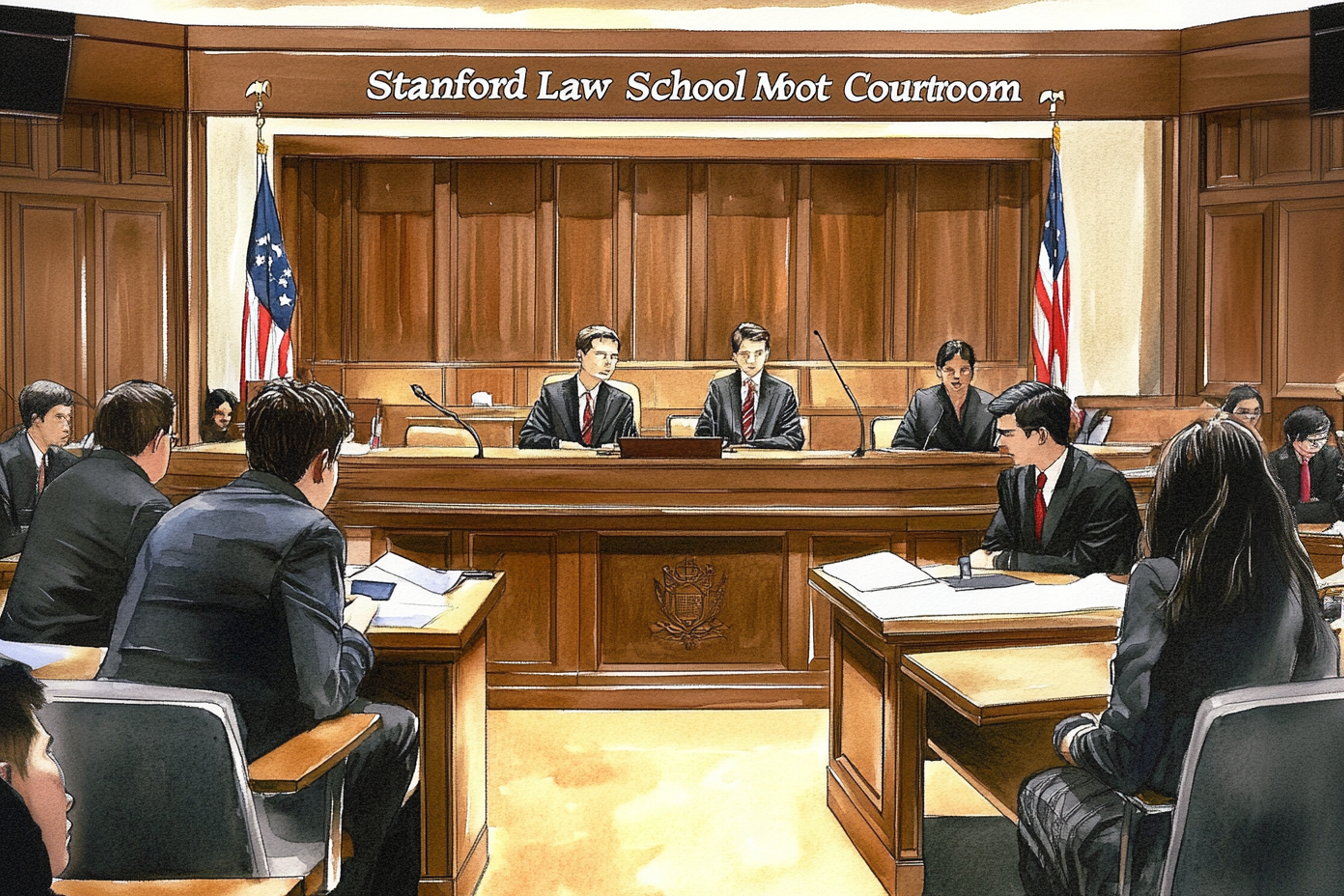
The image symbolizes the moot court room of Stanford Law School.
- Innovative Teaching Methods
Stanford Law School is known for its innovative teaching methods. Here are a few examples:
- Design Thinking for Lawyers: It teaches students to apply design thinking principles to solve legal problems. o Students learn to apply creative and innovative approaches to improve legal processes.
- Legal Design Lab: This lab collaborates with students, faculty, and practitioners. o The goal is to develop innovative solutions to improve access to justice. o Projects include applying technology to improve the delivery of legal services.
- Virtual Reality and Law: It explores the legal aspects of virtual reality technologies. o Studies the application of VR technologies in legal practice, for example, in court hearing simulations. o Legal and ethical issues related to VR are also discussed.
- Technology-Assisted Legal Education: The school implements advanced technologies in the educational process. For example, the application of artificial intelligence in legal research and document analysis.
These innovative methods not only enrich students’ learning experience but also prepare them for the demands of the rapidly changing legal job market. They foster creative thinking, interdisciplinary collaboration, and technological skills that are necessary for a modern lawyer.

The image symbolizes the design thinking of Stanford Law School students.
- Competitive Advantages
Stanford Law School has several unique advantages that set it apart from other leading law schools.
- Proximity to Silicon Valley: The school’s location in the heart of Silicon Valley allows students to closely collaborate with technology industry leaders.
- Interdisciplinary learning: The school encourages collaboration with other Stanford faculties, allowing students to receive a comprehensive education.
- Innovative research: The school’s research centers engage in cutting-edge research in rapidly developing areas of law.
- Entrepreneurial culture: The school encourages an entrepreneurial mindset, which is reflected in its numerous innovative programs and initiatives.
- Career Prospects for Graduates and Famous Alumni
Stanford Law School graduates are known for their successful careers and influence in the legal field. The school’s graduate employment rate is very high, and their careers span various areas of law, from large law firms to public service and entrepreneurship.
According to the 2024 U.S. News & World Report, 95.2% of Stanford Law School graduates obtained full-time, long-term employment in the legal field within 10 months of graduation.
Famous Stanford Law School alumni include:
- Sandra Day O’Connor – the first female Justice of the U.S. Supreme Court
- William Rehnquist – former Chief Justice of the U.S. Supreme Court
- Sally Yates – former U.S. Acting Attorney General
Stanford Law School graduates operate not only in traditional legal fields but also hold leading positions in technology companies, government, non-profit organizations, and international organizations.
- Information for Potential Students from Armenia
Stanford Law School is open to international students and encourages applications from various countries around the world, including Armenia. Applicants from Armenia must have a bachelor’s degree and take the TOEFL or IELTS exam.
The school offers a number of scholarships and financial aid programs for international students. In addition, the school has an active international student community that supports students from abroad in adapting to the new environment.
- Conclusion
Stanford Law School continues to remain one of the leaders in legal education in the U.S. and the world, offering high-quality education, innovative research, and exceptional opportunities. With its unique position in Silicon Valley, strong emphasis on the intersection of technology and law, and commitment to innovation, Stanford prepares lawyers who are ready to lead the legal field in the 21st century.
About the Next Article
Don’t miss the next story in the Armenian Lawyers’ Association and Iravaban.net‘s special project “Law Schools Abroad” dedicated to the University of Chicago Law School. The University of Chicago Law School ranks 3rd among the best law schools in the U.S. according to the 2024 U.S. News & World Report ranking.
In our next article, we will uncover the unique features of the University of Chicago Law School, present its famous programs, and explore the unique opportunities it offers to students, especially international applicants. We will also address the significant contribution of the Chicago school to the development of legal and economic thought and its role in shaping modern legal education.
Get ready to discover how the University of Chicago Law School has shaped the intersection of law and economics and how it continues to influence global legal thought. You will learn about the opportunities it creates for students from different countries around the world, including Armenia.

